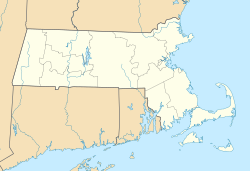House at 206 West Street | |
 | |
| Location | 206 West St., Reading, Massachusetts |
|---|---|
| Coordinates | 42°31′2.9″N71°7′10.76″W / 42.517472°N 71.1196556°W |
| Built | 1831 |
| Architectural style | Greek Revival |
| MPS | Reading MRA |
| NRHP reference No. | 84002680 [1] |
| Added to NRHP | July 19, 1984 |
206 West Street is historic house located in Reading, Massachusetts. It is locally significant as a well-preserved example of a Greek Revival cottage.


